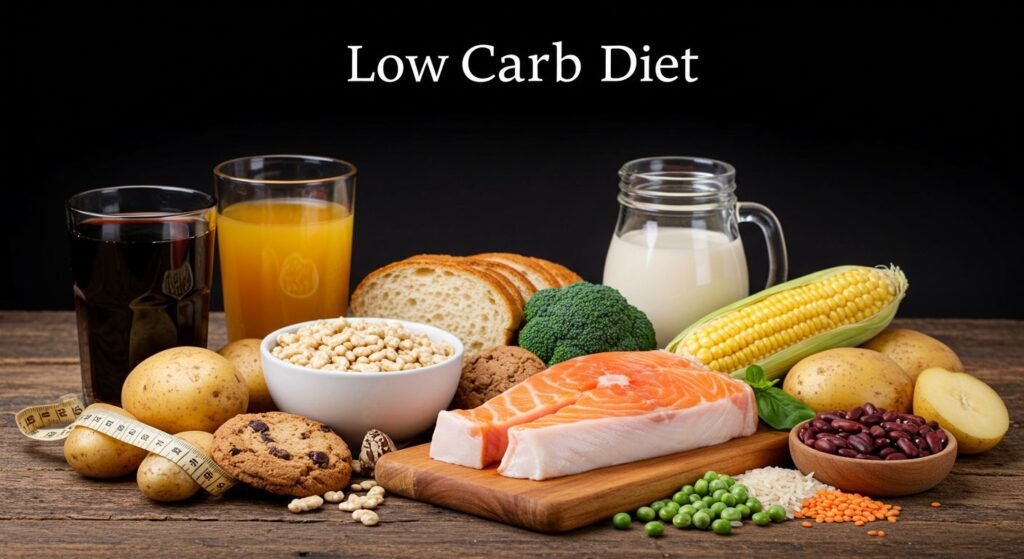Low carb eating — the basics
Have you ever wondered if reducing your carbohydrate intake could lead to better health outcomes? With many diets available today, the low carb diet stands out due to its potential benefits in managing weight and improving overall health. A low carb diet focuses on consuming fewer carbohydrates and more proteins and fats. This type of eating plan is designed to help control blood sugar levels, which in turn may aid in weight loss and prevent diseases like type 2 diabetes. Let’s explore the basics of adopting a low carb lifestyle and see if it fits your dietary goals.
What is an example of a low carb diet?
While there are several variations of low carb diets, one popular example is the ketogenic diet, commonly known as the keto diet. This diet emphasizes a high intake of fats, moderate proteins, and very low carbohydrates, typically less than 50 grams per day. Another example is the Atkins diet, which initially restricts carbs significantly, then gradually reintroduces them as the dieter approaches their weight goal. The paleo diet, focusing on whole, unprocessed foods and eliminating grains and sugars, also falls under the low carb umbrella. Each of these diets shares the common principle of reducing carbohydrate intake to achieve a state of ketosis, where the body burns fat for energy instead of glucose.
| Diet Type | Main Focus | Carb Limit |
|---|---|---|
| Keto | High Fat | Under 50g/day |
| Atkins | Gradual Carb Increase | Initial Phase: 20g/day |
| Paleo | Unprocessed Foods | No Specific Limit |
| Low Carb | Moderate to Low Carbs | Typically under 100g/day |
What food can you eat on a low carb diet?
A low carb diet emphasizes whole, unprocessed foods that are naturally lower in carbohydrates. Foods like leafy greens, non-starchy vegetables, high-quality meats, fish, eggs, nuts, seeds, and healthy fats like olive oil and avocado are staples. Dairy products that are low in carbs, such as cheese and yogurt, can also be included. Incorporating a variety of these foods ensures you receive the necessary nutrients while keeping your carb intake in check.
Foods to include in moderation
While following a low carb diet, some foods can be included in moderation to provide variety without exceeding your carb limits. Fruits such as berries can be consumed sparingly due to their lower sugar content. Full-fat dairy products, including cream and milk, should also be moderated, as their carbohydrate content can add up. It’s essential to pay attention to portion sizes and track carbohydrate intake to avoid unintentionally exceeding your daily limits.
What should I avoid eating on a low carb diet?

When adhering to a low carb diet, it’s crucial to avoid foods high in carbohydrates that may undermine your efforts. This includes sugary beverages, baked goods, pasta, rice, and bread. Processed snacks, including chips and crackers, often contain hidden sugars and excess carbs, making them unsuitable for a low carb lifestyle. Additionally, many processed foods contain unhealthy trans fats, which should be avoided regardless of diet. By steering clear of these foods, you can maintain your low carb goals and reap the benefits of this dietary approach.
“The first wealth is health.” – Ralph Waldo Emerson
Sample low carb meal plan
A well-structured meal plan is essential in ensuring you stay within your carb limits while enjoying a variety of tasty meals. Below are sample menus for three days on a low carb diet.
Day 1
Start your day with a spinach and cheese omelette, accompanied by a side of sliced avocado. For lunch, enjoy a grilled chicken Caesar salad without croutons. Dinner consists of baked salmon with a side of roasted broccoli and olive oil. Throughout the day, sip on plenty of water and consider a handful of almonds for a satisfying snack.
Day 2
Breakfast can be a bowl of Greek yogurt topped with a sprinkle of flaxseeds and a few raspberries. At lunchtime, try lettuce wraps filled with ground turkey, cheese, and your choice of toppings. Dinner could be a pork chop served with sautéed spinach and garlic. To curb any mid-afternoon hunger, enjoy some celery sticks with nut butter.
Day 3
Start with scrambled eggs with smoked salmon for breakfast. For lunch, a Cobb salad loaded with turkey, hard-boiled eggs, and bacon provides a filling option. Dinner might include grilled shrimp served over zoodles (zucchini noodles) with a drizzle of pesto. For an evening snack, a small portion of mixed nuts can be a great choice.
Healthy low carb snacks
1- Sliced cucumber with a dollop of hummus.
2- Cheese sticks or cubes.
3- Beef jerky with no added sugars.
4- Hard-boiled eggs.
5- A mix of olives.
Eating at restaurants
Dining out while following a low carb diet doesn’t have to be challenging. Most restaurants offer options that can be tailored to fit your needs. Opt for grilled meats and fish, and substitute starchy sides with extra vegetables or a salad. Request sauces and dressings on the side to control your carb intake. Additionally, many establishments are now accommodating dietary preferences, so don’t hesitate to ask for modifications to align with your dietary goals.
Get Our Weight Management Newsletter

For those interested in receiving more delicious low carb recipes, health tips, and advice on weight management, subscribing to our weight management newsletter can be beneficial. Each issue offers insights from nutrition experts, success stories, and practical tips to help you stay motivated and on track with your health journey. Sign up today and take the first step toward a healthier, lower-carb lifestyle.
Java Burn Coffee – 60 days guarantee!
Hey there! Ever wished your daily coffee could do more than just wake you up? I know I did. That’s why I got so excited when I found Java Burn. It’s this cool supplement that you just mix into your morning coffee, and it helps kickstart your metabolism without changing how your coffee tastes. Pretty neat, right?
Conclusion
Adopting a low carb diet can be a transformative experience, offering multiple health benefits, including weight management and improved metabolic health. By understanding which foods to embrace and which to avoid, you can tailor your eating plan to suit your goals and lifestyle. While the transition may present some challenges, the results can be rewarding, leading to a healthier and more balanced life. Remember, consistency and planning are key aspects of success. Make use of the information provided, consult healthcare professionals when necessary, and take control of your health today.
See more, you might like: Control Blood Sugar Levels: Weight Loss in 2024!
FAQ – Common Questions
What is the primary benefit of a low carb diet?
The primary benefit is often weight loss, but it can also improve blood sugar control and reduce the risk of type 2 diabetes.
Can I eat fruits on a low carb diet?
Yes, but it’s best to choose low-sugar fruits such as berries and consume them in moderation to keep your carb intake low.
How do I handle social situations while on a low carb diet?
Plan ahead by eating a small low carb snack before events, and focus on protein and vegetable options while minimizing high carb dishes.
Is alcohol allowed on a low carb diet?
Some low carb dieters enjoy alcohol, but choosing low carb options like dry wine or spirits with zero-carb mixers is advisable.
What are the potential side effects of starting a low carb diet?
Initial side effects can include fatigue, headaches, and irritability as your body adjusts. These often subside within a few weeks.


